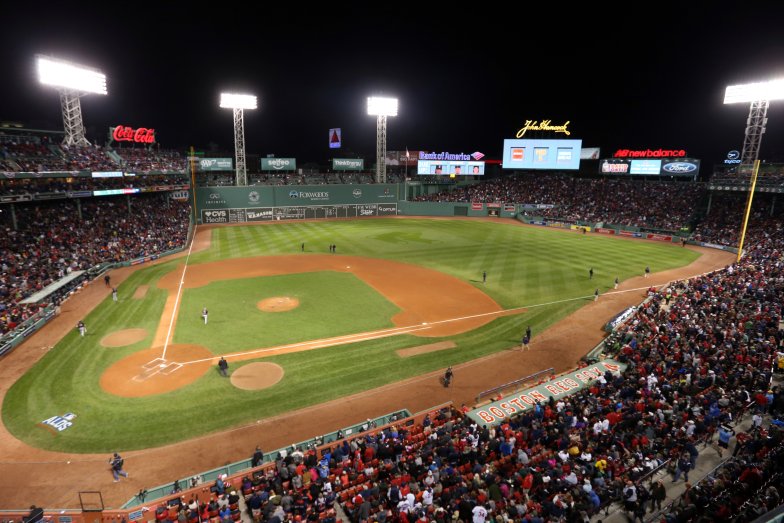The Plan for the Upcoming MLB Season
What’s summer if there is no baseball?
BOSTON, MA – OCTOBER 10: A general view of Fenway Park during Game 3 of ALDS between the Cleveland Indians and the Boston Red Sox at Fenway Park on Monday, October 10, 2016 in Boston, Massachusetts. (Photo by Rob Tringali/MLB Photos via Getty Images)
February 20, 2021
Now that the NFL is over, many sports fans now turn to the MLB, whose season, despite COVID-19 complications, is about to start. The current plan is for Spring Training to start on February 17, when pitchers and catchers report to each team’s Spring Training facilities. Players will not be required to get vaccinated but there will be daily testing and mask enforcement officers assigned to each team.
The regular season will take place as planned, starting on April 1st and having the typical 162-game season. The only catch is that there will be runners starting on second in extra innings and doubleheaders will consist of two 7-inning games, which are the only rule changes that the MLB is re-using from the shortened 2020 season.
Before an agreement was in place, the MLBPA (Major League Baseball Players Association) was negotiating with the Commissioner and MLB Owners to finalize the details about the season. The MLBPA rejected a proposal from the Owners that would have had a 154-game season, a Designated Hitter in both the American and National League, and expanded playoffs. But the owners’ plan would have delayed the start of the season by a month.
The MLBPA’s reasoning behind rejecting this proposal was a simple one: The players want to play. If other leagues can play, why can’t the MLB play as well? In addition to this, they did not want an expanded playoff because then owners may feel like they don’t have to spend as much money in order for their team to make the playoffs, which would have meant less money for the players. Contracts such as the one Trevor Bauer just signed, a 3-year $102 million contract, may not occur if the owners did not believe that they needed to spend as much in order to make the playoffs. Thus leading to a standstill in the negotiation process.
According to the rules, if no compromise was made between the MLBPA and the owners, then the MLB season would continue as planned under the current Collective Bargaining Agreement, or CBA. Which would mean Spring Training would start on February 17, and the MLB season would go on as if nothing ever happened, which would have been bad since the CBA does not take into account that we are still in a global pandemic. However, since there is now a compromise in place, Spring Training will take place as planned but with a twist.
Spring Training is still divided into two leagues, the Cactus League, based in Arizona, and the Grapefruit League, which will take place in Florida. But the plan is for teams in both leagues to remain in “pods”, so players can quarantine in small groups in order to limit their exposure to COVID-19. To further limit exposure among the teams, each team will be placed in a small division of sorts, and will only play a few teams for Spring Training. The Boston Red Sox, for example, will be playing their 24 spring training games against the Minnesota Twins, Tampa Bay Rays, Baltimore Orioles, Atlanta Braves, and Pittsburgh Pirates.
Although the teams will be forced to remain in these “pods”, there will be a limited number of fans allowed at games. The Chicago Cubs just received permission to have 25% capacity at their Spring Training home games in Mesa, Arizona. Which is a promising sign for fans as the regular season approaches, as it increases the likelihood of some fans being allowed in stadiums.
While we’re not certain about whether or not fans will be present at all Spring Training or any of the regular season games, we do know that a typical, 162-game season will be played. Which is something we should be grateful for because after all, what’s summer if there is no baseball?


